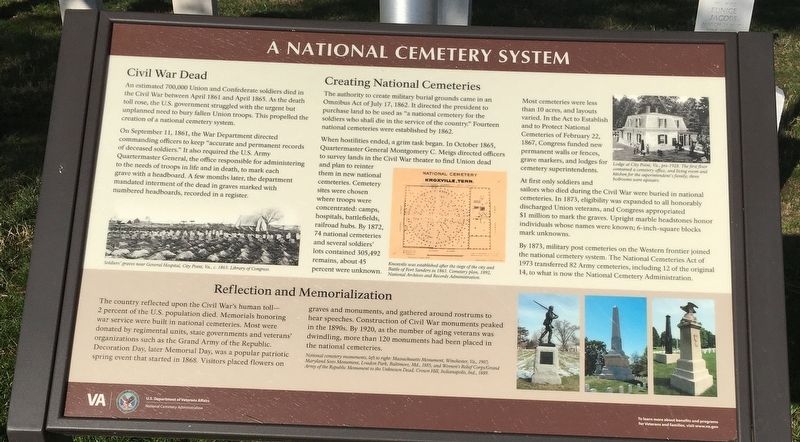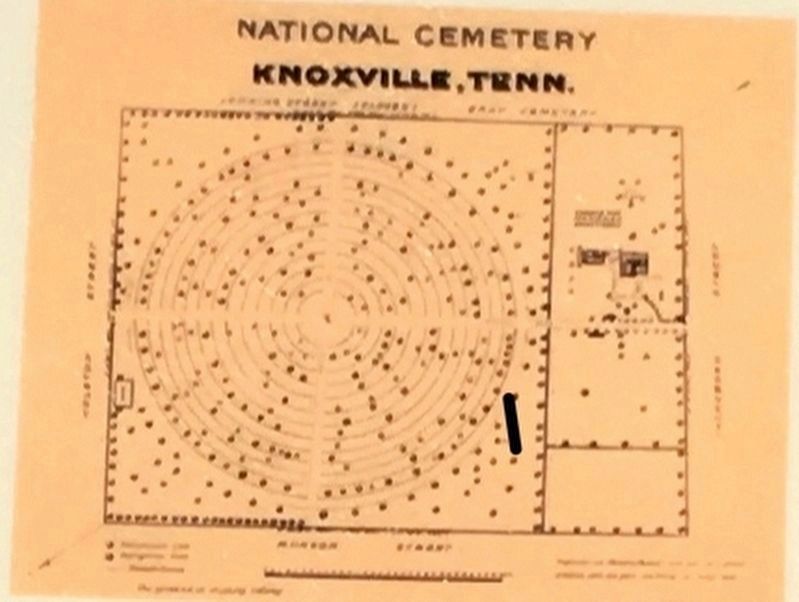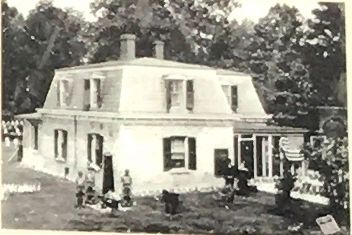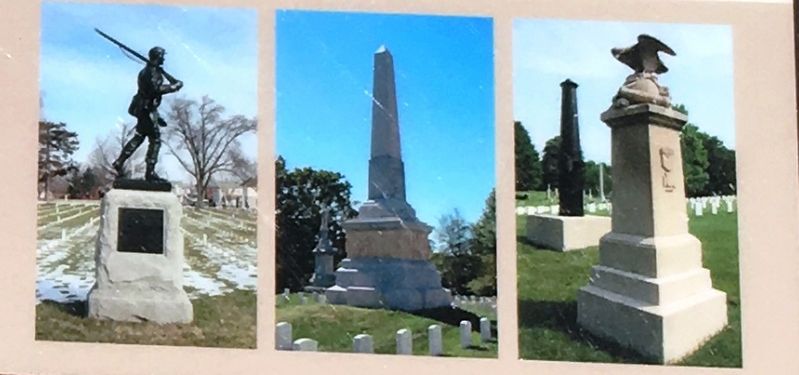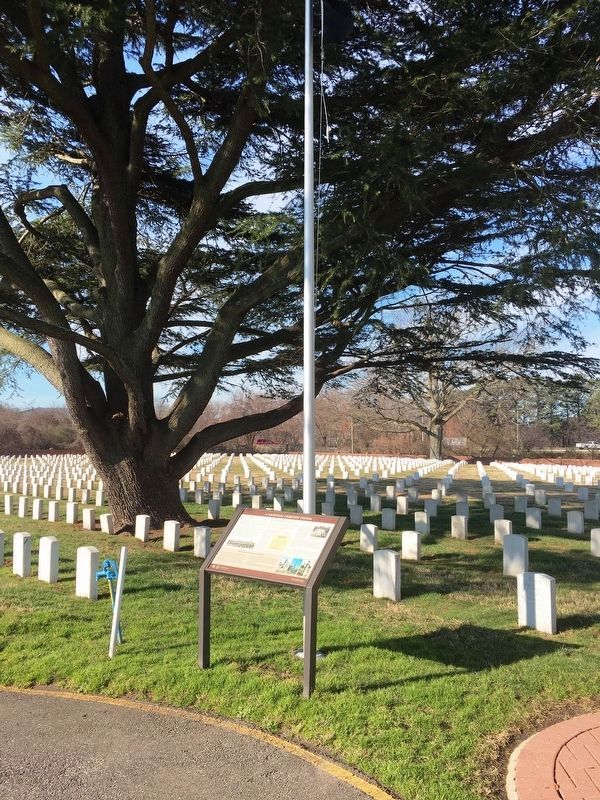Phoebus in Hampton, Virginia — The American South (Mid-Atlantic)
A National Cemetery System
Civil War Dead
An estimated 700,000 Union and Confederate soldiers died in the Civil War between April 1861 and April 1865. As the death toll rose, the U.S. government struggled with the urgent but unplanned need to bury fallen Union troops. This propelled the creation of a national cemetery system.
On September 11, 1861, the War Department directed commanding officers to keep “accurate and permanent records of deceased soldiers.” It also required the U.S. Army Quartermaster General, the office responsible for administering to the need of troops in life and in death, to mark each grave with a headboard. A few months later, the department mandated interment of the dead in graves marked with numbered headboards, recorded in a register.
Creating National Cemeteries
The authority to create military burial grounds came in an Omnibus Act of July 17, 1862. It directed the president to purchase land to be used as “a national cemetery for the soldiers who shall die in the service of the country.” Fourteen national cemeteries were established by 1862.
When hostilities ended, a grim task began. In October 1865, Quartermaster General Montgomery C. Meigs directed officers to survey lands in the Civil War theater to find Union dead and plan to reinter them in new national cemeteries. Cemetery sites were chosen where troops were concentrated: camps, hospitals, battlefields, railroad hubs. By 1872, 74 national cemeteries and several soldiers’ lots contained 305,492 remains, about 45 percent were unknown.
Most cemeteries were less than 10 acres, and layouts varied. In the Act to Establish and to Protect National Cemeteries of February 22, 1867, Congress funded new permanent walls or fences, grave markers, and lodges for cemetery superintendents.
At first only soldiers and sailors who died during the Civil War were buried in national cemeteries. In 1873, eligibility was expanded to all honorably discharged Union veterans, and Congress appropriated $1 million to mark the graves. Upright marble headstones honor individuals whose names were known; 6-inch-square blocks mark unknowns.
By 1873, military post cemeteries on the Western frontier joined the national cemetery system. The National Cemeteries Act of 1973 transferred 82 Army cemeteries, including 12 of the original 14, to what is now the National Cemetery Administration.
(sidebar)
Reflection and Memorialization The country reflected upon the Civil War's human toll—2 percent of the U.S. population died. Memorials honoring war service were built in national cemeteries. Most were donated by regimental units, state governments and veterans' organizations such as the Grand Army of the Republic. Decoration Day, later Memorial Day, was a popular patriotic spring event that started in 1868. Visitors placed flowers on graves and monuments, and gathered around rostrums to hear speeches. Construction of Civil War monuments peaked in the 1890s. By 1920, as the number of aging veterans was dwindling, more than 120 monuments had been placed in the national cemeteries.
Erected by U.S Department of Veteran Affairs, National Cemetery Administration.
Topics and series. This historical marker is listed in these topic lists: Cemeteries & Burial Sites • War, Spanish-American • War, US Civil • War, World II. In addition, it is included in the National Cemeteries series list.
Location. 37° 1.292′ N, 76° 19.588′ W. Marker is in Hampton, Virginia. It is in Phoebus. Marker can be reached from West County Street (Virginia Route 143) west of Frissell Street, on the left when traveling west. Marker located within the "Phoebus Section" of The Hampton National Cemetery. Touch for map. Marker is at or near this postal address: 99 W County Street, Hampton VA 23663, United States of America. Touch for directions.
Other nearby markers. At least 8 other markers are within walking distance of this marker. Phoebus (about 700 feet away, measured in a direct line); Emancipation Oak (approx.
¼ mile away); Hampton Institute (approx. ¼ mile away); a different marker also named Emancipation Oak (approx. ¼ mile away); John Baptist Pierce (approx. 0.3 miles away); Hampton VAMC National Cemetery (approx. 0.3 miles away); a different marker also named Phoebus (approx. 0.3 miles away); Phoebus Life (approx. 0.4 miles away). Touch for a list and map of all markers in Hampton.
Also see . . . Hampton National Cemetery. U.S. Department of Veterans Affairs, National Cemetery Administration (Submitted on February 19, 2019.)
Credits. This page was last revised on February 1, 2023. It was originally submitted on February 18, 2019, by Brandon D Cross of Flagler Beach, Florida. This page has been viewed 175 times since then and 15 times this year. Photos: 1, 2, 3, 4, 5, 6. submitted on February 18, 2019, by Brandon D Cross of Flagler Beach, Florida. • Bernard Fisher was the editor who published this page.
